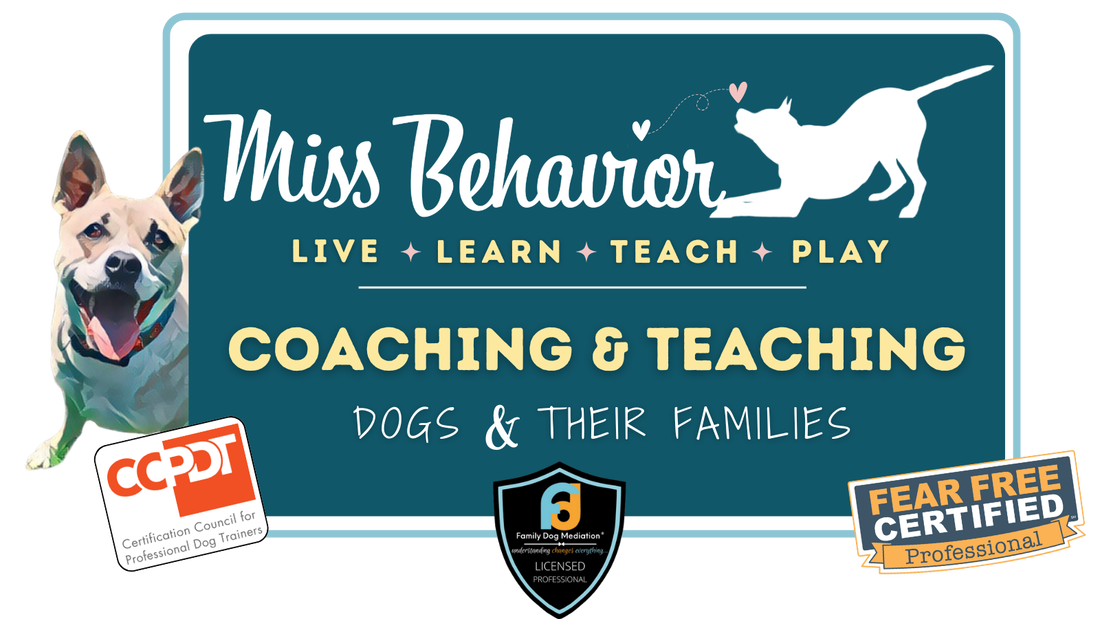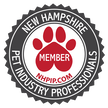|
10/26/2021 2 Comments There are no blank slatesIf we want to live with our dogs successfully, we can't ignore the gene pool. The truth is - no puppy is born as a clean slate. There are thousands of years of reinforcement history in their genes. Looking at genetics is just as important as looking at your dog's learning history, their environment, health, age, etc. Inspired by Kim Brophey's LEGS model in Meet Your Dog and her Family Dog Mediator Course, I would encourage you to spend some time getting to know your dog so you can set realistic expectations and stop trying to fight an uphill battle. Sometimes the best thing we can do for our dogs is get to know them as they are. If you aren't sure which of these groups your dog belongs to, I would encourage you to head over to The Dog Key to enter your breed or take the quiz to help narrow it down! Natural DogsNatural dogs are the closest living relatives to wolves and maintain many of the traits of their less domesticated relatives, such as strong predation and self preservation. They are the breeds who would later be developed into more specific groups. You may find that your natural dog struggles with confinement, wandering problems, and other forms of independence. They may also struggle with resource guarding and restraint because of that independent nature. Sight HoundsSight hounds were selected for and reinforced for HUNTING. They are one of the oldest groups of specialized dogs and often have an elongated face to support the ability to perceive prey at a great distance (along with increased sensitivity for movement) and the body type to give them the speed to acquire it. GuardiansGuardians are large brave dogs originally used to protect herds from predators and other perpetrators. They have also been reinforced for acting as gladiators against other large animals. They often have a higher tolerance for members of their inner-social circle but have been selected for suspicion of outsiders. They don't have much of a predatory sequence because this would have put their livestock at high risk of injury. They have been strongly reinforced for making threats toward intruders of their territory, personal space, and confinement. Resource guarding and territoriality would not be of any surprise in these breeds and is something you will need to take the time to protect against and have realistic expectations around. Toy DogsToy dogs were selected for and reinforced for sociability. They were originally used as heating pads, flea magnets, and alarm systems. They were bred to be lap dogs. They have a strong dependency on human social members and have an increased alarm response to potential threats of resources, especially when it comes to personal space, restraint, and other forms of handling. Scent HoundsScent Hounds have been reinforced through selection for hunting and for being able to shut off the outside world while focused on a scent, for commitment to a scent. They were also highly reinforced and selected for the ability for "mark"/bark behavior when they locate the target. They are very emotional and focused when it comes to hunting, which predisposes them to sensitivity and defensiveness around perceived threats of safety and resources. Gun DogsGun dogs were bred to HUNT and have been highly reinforced for working very closely with their human counterparts, in a co-dependent way. This means that they have also been selected for Neoteny, which comes along with a bit of a "Peter Pan Complex" - they remain young at heart, dependent on attention from people, lots of outdoor adventure and exercise and many extra years of acting puppy-like. They often have oral fixations so if their needs aren't met, these oral fixations could play out in excessive licking, chewing, and toy obsession. Because of the neoteny and dependence of people, they also tend to be more sensitive to loud noises, storms, etc. They are often impulsive because of their go-with-the-flow attitudes which serve them well for humans when at work and when living within the home. They tend to be more resilient to change and have a very broken up predatory sequence. They were not meant to kill or harm the prey - simply retrieve or find them. TerriersTerriers were bred and reinforced over the years for being resilient and tough. They were bred to hunt and resource guard. They were selected for being courageous to the point of insanity. With this personality type, they were able to be the original pest control solution over time. They have been selected for "gameness", predation without hesitation and for a completed sequence to kill the prey - to pursue without hesitation. Because of this, they can be prone to social conflict with other animals and excessive assertiveness Bull DogsBull Dogs were selected for entertainment purposes. They were selected for strength and their ability to bring down bulls in a contest. Terriers were then crossbred with them to increase their "gameness". Many in this group are both guardians and terriers. There is a stronger selection for full physical engagement with a threat but social with their inner circle in those with stronger guardian lines. There is a lot of variability in this breed, dependent on "gameness". They can be predatory, or not. They can be territorial, or not. They are often easily and quickly aroused, going from 0-60 very quickly. They love to wrestle and play hard! Herding BreedsHerding breeds have been selected and reinforced for being hypervigilant to sudden changes in their environment. Because of this, they were also selected for increased cooperation with human partners. Because of their difficulty with sudden environmental changes, they often have misplaced herding behavior toward social members in arousing situations or around sudden changes. Their predatory sequence is strong and exaggerated but not meant to come to completion through any grabbing or biting. Resource guarding toward outside threats is also something often seen in herding breeds and wouldn't be considered abnormal. Maintaining control and predictability is extremely valuable in the herding breeds. The World DogThe World Dog is any dog without 30% of more of any one group. It's a dog that the world creates. They are often opportunistic scavengers, garbage and poop-eaters. They have a natural selection for ritualized aggression, which is the intent to avoid harm - not to create it. Now that you know where your dog's genes came from and what humans created through artificial selection (or not), does this help you set more realistic expectations for your dog? Come on over to the Virtual Membership to join the discussion and learn how to help your dog, or reach out for a one-on-one virtual consultation to figure out where to go from here! Tell me, which group does your dog belong to and does the description fit?
2 Comments
Leslie
10/26/2021 06:01:36 pm
Scent dog …difficulty on leash, shuts off outside world while on scent. Impulsive and dramatic. Gun dog….enthusiastic and emotional greetings. Immature. I’d say that was a perfect description.
Reply
Karen DeBellis
10/27/2021 07:46:13 am
Hazel definitely fits the terrier characteristics. She is very smart and very stubborn. As of late she has become very timid of people and other dogs which was not her usual behavior.
Reply
Your comment will be posted after it is approved.
Leave a Reply. |
|
- Home
- About
- Blog
- Services
- Membership
-
Courses & Freebies
- All Courses
- FREE Boredom Buster Recipes
- COURSE: Building Resilience in your Family Dog
- COURSE: Managing the Leash Walk
- Potty Training COURSE
- Paws Off COURSE
- COURSE: Managing the Leash Walk
- FREE Attention Building Challenge
- FREE Scratchboard Training
- FREE Rest and Recovery Round-Up
- FREE Body Language 101
- Contact
- Home
- About
- Blog
- Services
- Membership
-
Courses & Freebies
- All Courses
- FREE Boredom Buster Recipes
- COURSE: Building Resilience in your Family Dog
- COURSE: Managing the Leash Walk
- Potty Training COURSE
- Paws Off COURSE
- COURSE: Managing the Leash Walk
- FREE Attention Building Challenge
- FREE Scratchboard Training
- FREE Rest and Recovery Round-Up
- FREE Body Language 101
- Contact
Search by typing & pressing enter













 RSS Feed
RSS Feed





